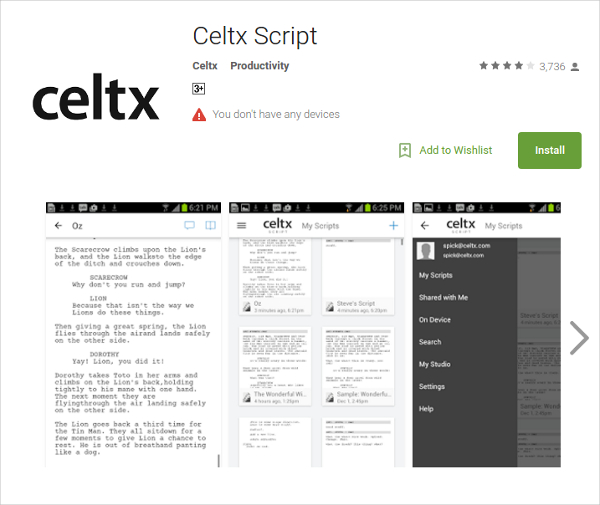

Go to “File – Print/Download PDF” and the pdf dialog opens up. This will also – most likely – be your preferred choice if you want to pass it along to someone else, a producer or manager, or someone for feedback. Your third option to export your script with celtx is as a pdf.
#How to save a celtx script as a file manual
So, in case you’re using the fountain format here, be aware that you might have to do a little bit of manual format correction there. I personally had some problems exporting fountain files with celtx, some formatting hasn’t been interpreted 100% correctly in other writing applications that support fountain, although that also differed a bit from application to application. If you want to know more about fountain, how it works, and which writing applications support it, go to. That means fountain files are basically also plain text files, but they use additional characters here and there to make sure an application that can handle fountain files interpretes the formatting correctly. Fountain is a simple markup syntax for writing, editing, and sharing screenplays. Your second option to export your script is in fountain format.

This format can be read by many other screenwriting applications. In terms of formatting, everything will be flush left except the character names and the dialogue, which will have a couple of spaces at the beginning of the line to give it a little bit of a “screenplay-y” feel. If you choose “Export to Text”, celtx will create a simple text file with the “.txt” file extension. If you’re in the screenplay editor, go to “File – Export Script” and you see the first two: In terms of exporting your script from celtx to use it in other screenwriting applications or to pass it on to someone else you have three options.


 0 kommentar(er)
0 kommentar(er)
